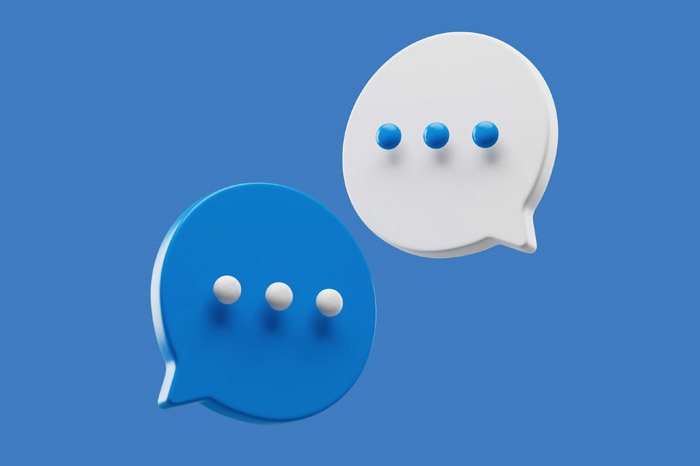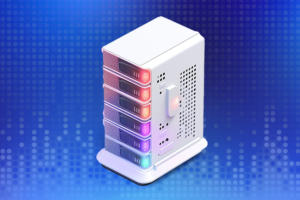Chatbots today are the digital assistants of every business and website. While they are not a new trend, it took time for users to get used to them and for companies to evolve and make them useful for themselves.
With the increasing use of Instant Messaging, chatbots came to help users get the information they need quickly and facilitate businesses themselves by adding value.
What is a chatbot?
Chatbot is a programmed chat interface that website visitors can easily interact with as if they were in their personal messenger app.
The chances that you have already used a live chat on a website are high. Chatbots are the same thing, except that questions/answers are already programmed and do not dependent on a human person.
Chatbot helps visitors to get from an A spot to a B spot quickly and smoothly. In fact, it is very similar to a guide providing accurate instructions and information.
Our digital assistants
We call chatbots “digital assistants” for this very reason. If, for example, I have visited an eShop and I want to know the shipping costs, the chatbot can give me this information. If I need help with how to order, the chatbot can offer me some instructions, and if it cannot help me, it may forward my request directly to live chat support or collect my details for customer support to contact me.
On the one hand, chatbots have limits we have programmed into them. The conversations and the answers they give, the chat flow is programmed. They cannot do things that we have not ‘taught’ them to do.
On the other hand, with the evolution of AI (Artificial Intelligence) chatbots, we have increasingly more clever assistants that can understand more complex questions and create an answer that is not necessarily programmed.
Let’s talk a bit more about websites. Why might a website need a chatbot today? How can it benefit it directly or indirectly?
The chatbot makes things easier
No matter how complete your website is, visitors rarely want to bother searching. They want to get the information immediately.
The chatbot makes things easier. Frequently asked questions and information that the visitors may need, they can get it effortlessly without having to search or change the page: with the guidance of the chatbot and through a context of conversation and interaction.
The chatbot is always there for us
The chatbot is our 24-hour assistant. It is always on our website to help visitors with questions, regardless of day or time. It will inform, guide, and collect all the necessary data from the users whenever needed.
Popular uses of chatbot
In the list below, you can see just a few of the most popular uses of a chatbot on a website:
- Customer support
- Providing answers to questions
- Ticket booking
- Booking an appointment
- Check product availability
- Product search
- Product suggestion
- Order progress tracking
- Customer feedback
- Lead generation in service provision
- Email list creation
- Reinforcement and parallel sale in eShop
- Cost estimation
- Returns process management
There is a pattern in the list. The chatbot often comes either to assist 100% or supportively in processes that previously required natural communication (online or by phone), thus reducing the workload of human customer service.
Customer Support & Increase productivity
In this regard, let’s take the example of customer support and FAQ. Through the chatbot’s chat flow, there is a first level of assistance that practically might cover visitors to a large extent.
Even if the chatbot cannot assist your website visitors, it can still record the problem and send it to human customer support agents. Also, keep in mind that the workflow of customer agents will become simplified.
Let’s not forget how beneficial this first level of (direct) assistance for a business profile is. The visitor/consumer feels more secure, and the business gains trust and productivity.
By accelerating the response times and considering that, in most businesses, 80% of the questions that arrive are “routine” ones, chatbots free up employees to deal with more critical questions more productively.
Data Collection & Chatbots
An important use that chatbot has come to evolve is data collection. Previously, the best way to collect data on our website was by using forms. But forms are static, have a specific purpose each time, and are often abandoned by visitors.
In the chatbot, we can have many chat flows for different purposes. We can collect the data we need through a user-friendly interface and have a fully dynamic flow based on the information users provide in the chat flow and their behavior within the website.
That’s why they are a great way to get visitors’ details for an appointment or to subscribe to a newsletter list.
Chatbot evolution is an ongoing process
Under no circumstances could anyone say that you can build a chatbot and give up. Chatbots can and need to improve constantly. They should be updated with more information, optimized to more easily reach any target, and remain useful to the visitor.
The chatbot is not something different from the funnels of our digital marketing strategy, it is part of them, but also autonomous. A complete flow for a chatbot is a success, a procedure completion, a purchase, an appointment booking, and so on.
We need an overview of these flows, how successful they are, and how helpful they are to our visitors. Of course, this can happen through monitoring the chat flows.
The more we improve our digital assistant, the better the performance of the goals we have set for it will be. As the chatbot evolves, we can minimize more processes and increase sales and productivity.






Join the Discussion